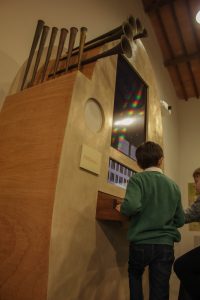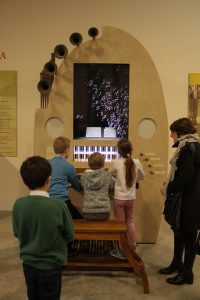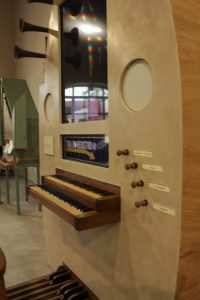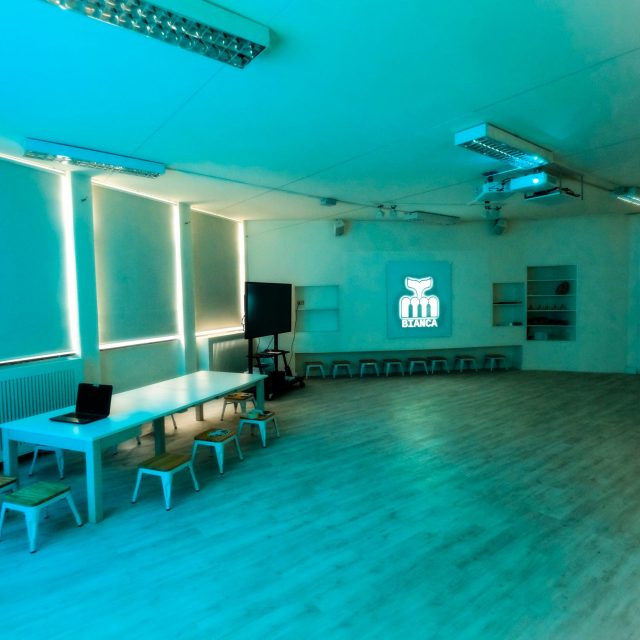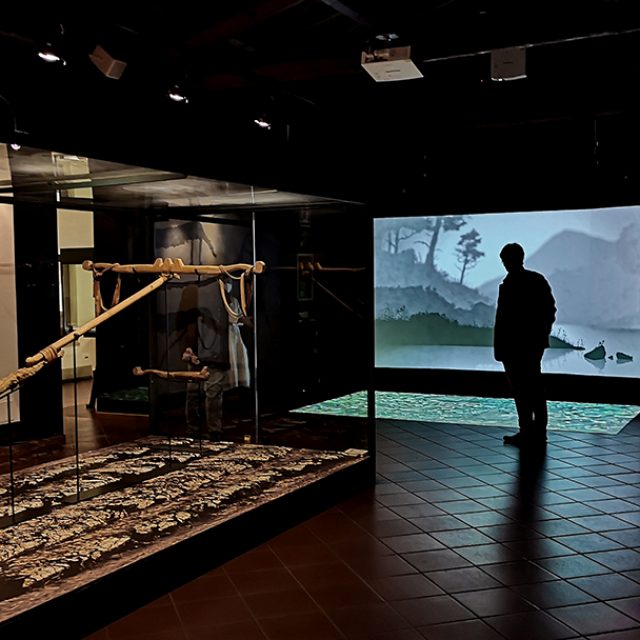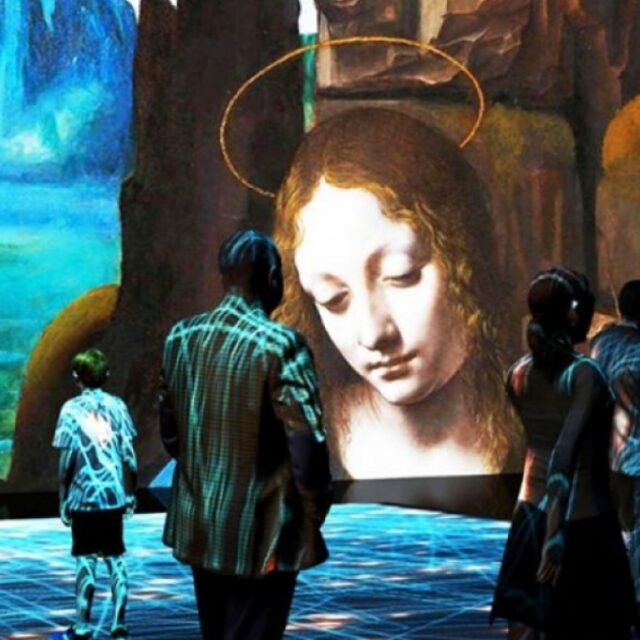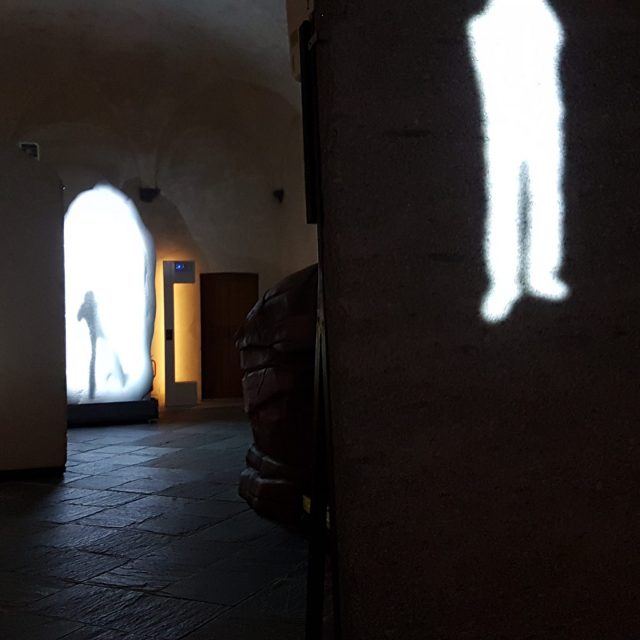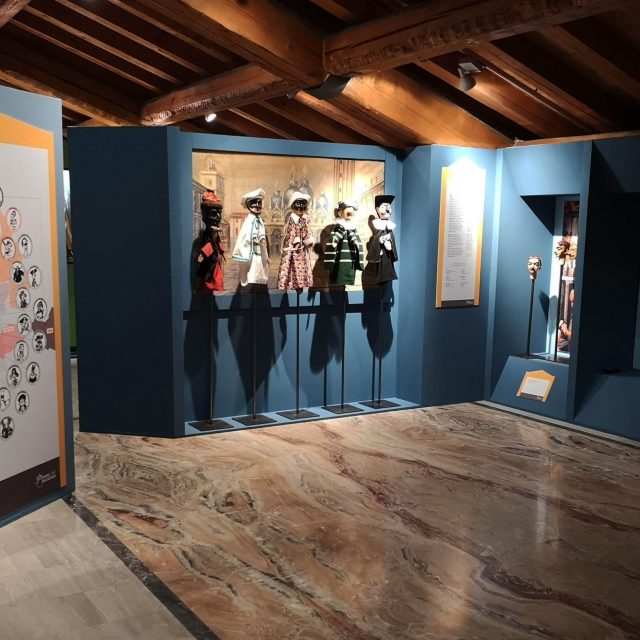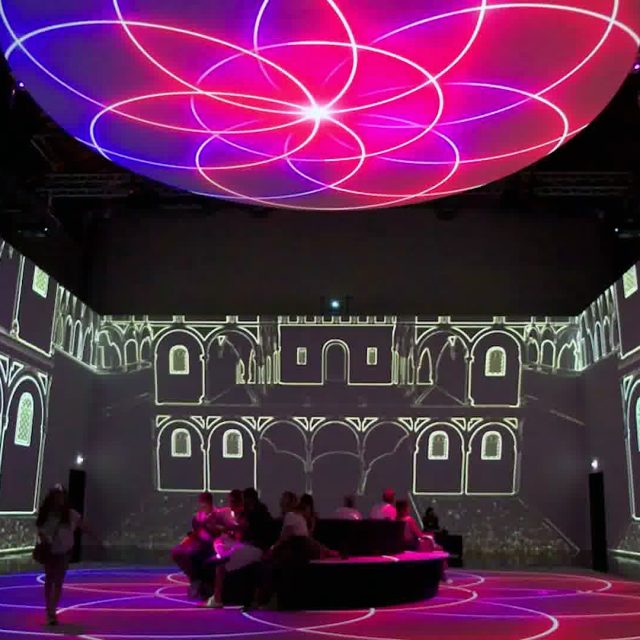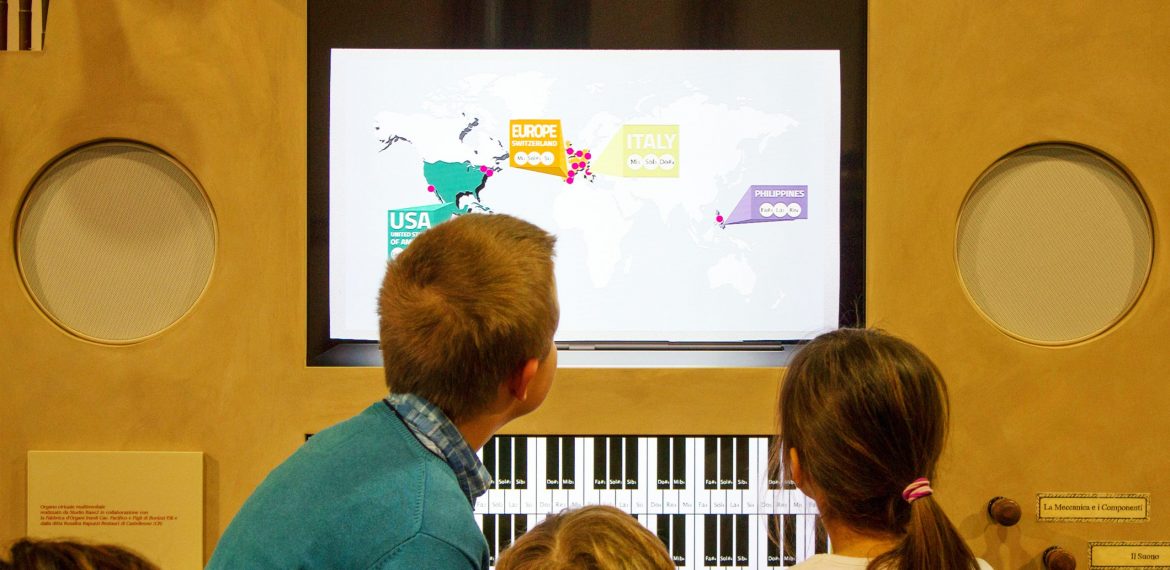
Art of organ making
At the Civic Museum of Crema, we made an installation called the “Organologomatico” in collaboration with Bonizzi Organi.
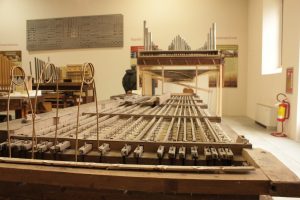

Marcello Palmieri – Avvenire: History of music. The first museum of organ-making art is opened in Crema
“In the entrance room, on the left, the highlight of the exhibition is an unparalleled novelty: a multimedia installation, for which a name did not exist. Its inventors, the Studio Base2 technicians, called it “organologomatico”, which literally means “automatic instrument talking about the organ,” but the definition makes justice only if “talking” is interpreted in the broadest meaning possible, because the machine “physically” speaks (several videos explain the differences between organists and organ builders, illustrate the pipes and the mechanics of the instrument, recount the life of Petrali…), but also interacts with the visitor through an interface.
To be clear, the “organologomatico”, seen from afar, looks like an old jukebox with some organ pipes on the left (some of them are trumpet-shaped).
Coming closer, you will notice that the keyboard and the pedals are those of the king of instruments. At eye level, you can watch a video, positioned just above another piano keyboard (a multimedia one). On the left, at hand, the “registers”: those knobs that manage the different sound timbres in real organs, and that in the installation activate and deactivate the various multimedia contents. There are registers, but also notes and chords. To acknowledge the most important organs in the world and the ones belonging to the diocese of Crema, mapped inside the organologomatico, you have to compose on the keyboard different musical consonances. In short, the organ displayed depends on your composition.
Listening to famous pieces works with the same mechanism. Therefore, it is natural: the more one is good at playing the keyboard, the easier it is to get acquainted with the device (which can also be used as a normal electronic organ with a single register).
It’s hard to break away from that toy: it can keep going for hours without repetitions, but the time is short, and the museum is not quite Lilliputian. On the wall opposite to the entrance, a display case collects the glories of Giovanni Tamburini and Pacifico Inzoli: medals, plaques, photos of ancient works show the prestige of the founders of the organ art in Crema. And the traditional wall panels, hanging just above, seem to balance the futurism of the organologomatico.”
